Perspectives – Colleagues Discuss Design, Practice and the Built Environment
Attracting & Retaining Talent

Steve Huegli, AIA
Steve provides insightful examples from his firm on attracting and retaining talent.

Jason Dale Pierce, AIA, LEED AP (BD+C)
How is the business of architecture actually being run?

Collaboration

Shannon Calder, AIACC
Needed: Greater engagement between architects and the AIA.

William J. Worthen, FAIA, LEED Fellow, GPR
Architects need to be actively managing greater collaboration among a team of consultants.

Jason Dale Pierce, AIA, LEED AP (BD+C)
On the best way to collaborate: don't hold on to preconceived ideas of people's abilities.
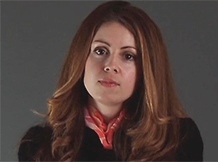
Elise Drakes
Why my firm decided to take on a pro-bono project and the valuable lessons learned in its completion.

John Peterson, FAIA
Why pro-bono work needs to be good for you and your firm before committing to any project.

Jack MacAllister, FAIA
The lessons learned about collaboration in Louis Kahn's office were put to good use.

Robert Ivy, FAIA
Impressions on this current decade of practitioners, and how they differ from the previous generation.

Steven Ehrlich, FAIA
Working within his four-partner atelier,a previous individualist appreciates collaboration.


Education

Matthew Gaul, Associate AIA
In needing to deal with many different types of people, flexibility becomes important.

Brett Tullis, LEED AP (BD+C)
There is a disconnect between the education of architects and the profession's needs.

Larry Scarpa, FAIA
Everyone looked to the design studio as a measure of what kind of architect you would become, recalls Larry Scarpa. But he doesn't believe in it's singular importance.

Adrianne Steichen, AIA, LEED AP (BD+C)
Important piece to educating architecture students-- understanding the community they live in and its needs.

Evelyn Lee, AIA, LEED AP (BD+C)
How can architects weave together the components of a problem to create a collaborative solution?

Hafsa Burt, AIA, LEED AP, BD+C
Why code knowledge is a necessary educational component.

Carol Ross Barney, FAIA
Sure, everyone has some design talent, but there are two "sparks" you simply cannot teach.

Larry Scarpa, FAIA
Teaching is mutually beneficial, notes Larry Scarpa. You give back but you also learn things you never even imagined.

Alice Kimm, FAIA
It's vital for architects to educate the public on what makes a good environment.


Emerging Professionals

Alison Marik Zeno, Associate AIA, LEED AP
Alison sees separate "buckets" of specialization and would like a holistic approach to design.

Rachel Minnery, FAIA, LEED AP
Understand where you want to contribute your unique talents and interests and then pursue it.

Adrianne Steichen, AIA, LEED AP BD+C
If there is some dream you have for the future, don't put it off--do it now.

Matthew Gaul, Associate AIA
Communication is key in knowing more about what is taking place.

Hafsa Burt, AIA, LEED AP, BD+C
Hafsa advises to keep your ego in check, to learn from everyone, and keep focused.

Evelyn Lee, AIA, LEED AP (BD+C)
Evelyn reflects back to her graduation day and that feeling of being able to accomplish anything.

Evelyn Lee, AIA, LEED AP (BD+C)
Evelyn explains how she ended up on her State's regional board by being willing to become involved.

Gretchen Flesher
Gretchen brings up the importance of young architects connecting with mentors.

Ronald Altoon, FAIA, LEED AP, CDP
Things never taught you in school--an updated version to "Fifty Ways to Leave Your Lover"""

Elizabeth Chu-Richter, FAIA
The AIA 2015 President and her daughter discuss becoming a 21st Century architect.

Carol Ross Barney, FAIA
Not wanting to discourage, especially with the economics, here are the positives about architecture.

Gwynne Pugh, FAIA, ASCE, LEED AP
Gwynne talks about the effort and talent and interest necessary in becoming a master--along with the seeing and the doing.

Odile Decq
The young have a responsibility to "build the future." Odile believes "you have to have a vision--and patience."
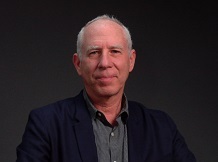
Steven Ehrlich, FAIA
The energy and freedom of youth are a gift. Make the most of it and "leave the box."
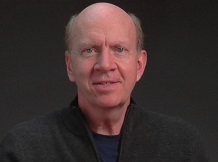
Robert Ivy, FAIA
The small acts that you take in architecture add up and define you and what you will become.
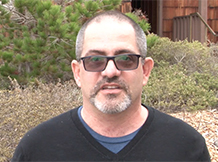
Gary Cabo
Gary believes that genuine listening brings greater creativity and increased solutions.

Jordan Levin, AIA
Why the most valuable experience for a young professional is to oversee construction.

Michael Holliday, FAIA, LEED AP and Erik Holliday
Michael and his son Erik share their passion for architecture and inspirational design.

Jason Dale Pierce, AIA, LEED AP (BD+C)
Get away from that desk: gaining a wider perspective by engaging in people and activities.


Equity
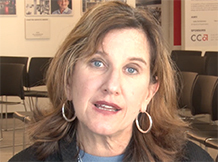
Saskia Dennis-van Dijl
A clear business case can be made that gender and minority participation increases a firm's bottom line.

Michael Willis, FAIA
"A sight they're not going to see everyday," points out Michael about meeting a black architect.

Rosa T. Sheng, AIA, LEED AP (BD+C)
The reasons why women and men are leaving the profession--and what we can do about it.

Harrison Fraker, Professor of Architecture and Dean Emeritus
Former UC Berkeley Dean of Architecture lists 3 steps to create equity in architectural education.

Deanna Van Buren, LEED AP
Having experienced herself through many cultural lenses, an advocate uses design for social justice.

Carol Ross Barney, FAIA
Carol recalls her decision to become an architect and her education as one of the few women designers.

Julia Donoho, FAIA
Citing positive and negative examples from famous women architects.

Saskia Dennis-van Dijl
Saskia researched and talked to practitioners about women leaving practice--and shares her insight.

Wendy Bertrand, Architect, OWADP
A co-founder of the Organization of Women Architects talks about 40 years of working for change.

Odile Decq
An outspoken architect acknowledges difficulties for woman but they must be "less comfortable."

Tova Cook
International architects are fearful of speaking out on issues of diversity and pay.

F. Jason Campbell, Associate AIA
A vibrant atmosphere for the creation of ideas and for cultural interventions requires diverse views.

Hafsa Burt, AIA, LEED AP, BD+C
A business owner struggles with the fact that the problem of equity should still exist.

Tibby Rothman
Tibby feels privileged to work for the AIA and support its efforts towards equity for all.

Matthew Gaul, Associate AIA
When talking about the "Missing 32%," a voice from the opposite gender.

Adrianne Steichen, AIA, LEED AP BD+C
The focus is on women but there are bigger issues around equity and interest that need to be addressed.

Saskia Dennis-van Dijl
Firms reach out about how they can address their own pinch-points on equity issues.
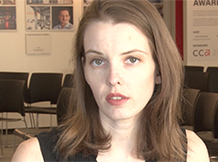
Ashley Hinton, Architect, NCIDQ
The best way to gain insight into the firm and career is to have a mentor.
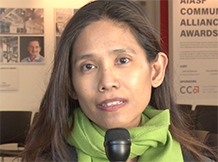
Lisa Boquiren
The profession is at a crossroads in remaining relevant and current: it's time to look at reality.

Susan Kolber
A recent graduate has had her eyes opened to career frustrations.

Carol Ross Barney, FAIA
Quoting Gloria Steinem about old women being rebels, Carol discusses the diverse people in her non-conforming firm.

Anesu Dhliwayo
Addressing the lack of minority women in the profession.

Julia Donoho, FAIA
When architects leave the profession, both architects and the profession lose out on their investment.


Future of Architecture

Matthew Gaul, Associate AIA
Is there an approaching shift in design thinking that will keep architecture relevant?
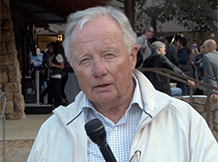
Derek Parker, FAIA, RIBA, FACHA
Stacking up the creativity of architects next to the issues on this planet---- a need to step up now?

Robert Ivy, FAIA
The importance of public outreach, not by teaching or telling, but by engaging and listening.

Steven Ehrlich, FAIA
So what's Multi-Cultural Modernism? Start with a mix of the primal with the sleek and futuristic.

Paul W. Welch, Jr., Hon. AIA
The challenges of repositioning the AIA--and the biggest challenge of all.


Gratification

Larry Scarpa, FAIA
Seeing how people experience and react to his buildings gives Scarpa satisfaction and keeps him going.

Michael Willis, FAIA
A firm owner feels most proud about the firm's city projects that don't have his name on them.

Evelyn Lee, AIA, LEED AP (BD+C)
Gratitude on hearing back from others on meaningful advice given that has helped them to grow.

Jason Dale Pierce, AIA, LEED AP (BD+C)
Gratification comes when part of a diligent and creative effort to solve a problem.

Gary Cabo
Being in the middle of diverse points of view generates unexpected solutions.

Rachel Minnery, FAIA, LEED AP
Getting energized when architects sit around the table to solve a problem together.

James P. Gibbon, AIA
Exceeding your client's expectations through good design--that's gratifying.


High Performance

Martin Bovill, AIA
Working with industry to improve on sustainable features within a $6 billion Australian mega-project.

William Leddy, FAIA
Steps the profession can take towards a post-carbon world: one is to stop fussing over LEED points.

Ken Powelson, LEED AP
Lessons learned in designing the first net-zero classroom building in North America.

Rachel Minnery, FAIA, LEED AP
Understand the bigger picture of hazards by looking outside the site and in the surrounding community.
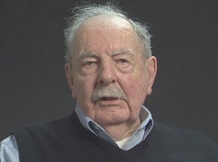
Chuck Davis, FAIA
Tracing environmental thinking back throughout 50 years of EHDD's pioneering practice.

Larry Scarpa, FAIA
Larry's approach to sustainability is common sense. He sees it as a question of ethics.


Inclusive Design

Alexander Zora
Alexander has cerebral palsy and wonders how designers can connect with each one of us.

Diane Zoura, Associate AIA
Having a blind cousin opened Diane's eyes to see the importance of designing for the senses.

Influences

Rachel Minnery, FAIA, LEED AP
When architects are made aware of the community risks, their designs can make a significant difference.

Evelyn Lee, AIA, LEED AP (BD+C)
Many mentors helped to keep Lee moving along in the profession.

Hafsa Burt, AIA, LEED AP, BD+C
A focus inspired by theory has changed considerably towards environmental and societal issues.

Adrianne Steichen, AIA, LEED AP BD+C
Emerging architects involved in the AIA learn more about available opportunities.

Matthew Gaul, Associate AIA
Recalling an instructor who helped this emerging architect understand what would enable him to design.

George Homsey, FAIA
George recalls working with Joe Esherick and the many vistas it opened, including becoming a principal at EHDD.

Jason Dale Pierce, AIA, LEED AP (BD+C)
Looking back on a first job and continuing to be conscious of those influences that occurred early .

Anesu Dhliwayo
Seeing minority women architects lecture can confirm that real possibilities exist.


Leadership

Adrianne Steichen, AIA, LEED AP (BD+C)
The key to leadership is good listening and a clarity of purpose--and these skills can be taught.

Jason Dale Pierce, AIA, LEED AP (BD+C)
The key to leadership is listening and clarity of purpose--and these skills can be taught.

Hafsa Burt, AIA, LEED AP (BD+C)
As opposed to "managing" some firm owners prefer to "guide" their employees.

Legacy
Licensure
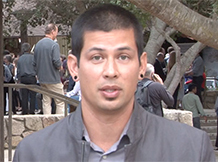
Yes Duffy, Associate AIA, LEED GA
The way to get more responsibility in the profession you love.

Paul W. Welch, Jr., Hon. AIA
Licensing is a "public duty." But are the expectations towards it unrealistic?"

Rachel Minnery, FAIA, LEED AP
Licensure is a verification of capabilities that allows your voice to be heard and valued.

Evelyn Lee, AIA, LEED AP (BD+C)
Architects prefer to listen to other architects, and licensure is the way to be heard.

Adrianne Steichen, AIA, LEED AP BD+C
Steichen explains why ticking off the licensure box was important to her.

Jason Dale Pierce, AIA, LEED AP (BD+C)
Pierce became licensed--that was the thing to do--but he's not sold that everyone needs to do so.

Hafsa Burt, AIA, LEED AP, BD+C
Like becoming a doctor or being in any professional line of business, it's the responsible next step.


Ownership

Peter Dodge, FAIA
Peter explains EHDDs ownership transition, the fruit of years of discussion.

Matthew Gaul, Assoc. AIA
Pondering the question: to go off on your own design direction or contribute to strengthening a firm?

Helena Jubany, AIA, LEED AP
Tips gained through the process of merging two established architecture firms.

Adrianne Steichen, AIA, LEED AP (BD+C)
Instead of thinking of herself as an entrepreneur, Steichen sees herself as continuing a legacy.

Rachel Minnery, FAIA, LEED AP
Working even longer and harder hours in management can make one pause. Is it time to rethink models?

Jason Dale Pierce, AIA, LEED AP (BD+C)
Asking what is the next step? What about hanging out your own shingle?

Timothy J. Corbett, LEED AP
A risk assessor discusses high performing firms and some of the characteristics of their leaders.


Post-Occupany
Preservation

Karen Lesney, Associate AIA
An architect's duty is to protect existing buildings that already have merit in their local community.

Ron Radziner, FAIA
Insights gained through the renovation of the modern iconic Kaufmann House, originally built in 1946.

Value of Design

Helmut Jahn, FAIA
Helmut believes that the real value of design comes out only with the passage of time.

Paul W. Welch, Jr., Hon. AIA
He would like the public to appreciate design more broadly; it wouldn't hurt if architects did too.

Tim Culvahouse, FAIA
An architect and marketing guru lays out the steps in communicating the value of your unique design.

Odile Decq
Educate the public on the value architects bring, but in a language people can understand.

Carol Ross Barney, FAIA
The careful listening architects provide to clients may not be reciprocated when it's solution time.

Tibby Rothman
A passionate supporter of architecture sees the architect as sublimely integrating art into reality.

Leigh Christy, AIA, LEED AP (BD+C)
Design thinkers and creators need to understand the great value they bring to interdisciplinary teams.

Paul W. Welch, Jr., Hon. AIA
In the context of our communities, there is a much more expansive role for design.


Visualization

Mehrdad Farivar, FAIA
Facilitate communication at earlier stages of a project through Integrated project delivery (IPD).

Rachel Minnery, FAIA, LEED AP
Architects can help people understand issues because they can visualize, in 3D, what doesn't yet exist.

Carol Ross Barney, FAIA
Having had to wait for the renderer to "see" her building design is one reason why Carol loves 3D technology.

Jack MacAllister, FAIA
Recalling the early days of using computers, and an integrative practice where architects and engineers worked together on a new era of campus lab buildings. .

Dr. John Messner
Steps for executing BIM on projects: find champions, aid owner involvement and commit resources.


Work | Life Balance

Evelyn Lee, AIA, LEED AP (BD+C)
Here's someone who doesn't handle the balance between professional and personal life all that well.
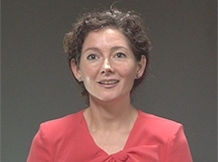
Rachel Minnery, FAIA, LEED AP
If you love what you're doing, it's intertwined with your life and categorizing it isn't important.

Betsey Olenick Dougherty, FAIA, LEED (BD+C)
A family of architects reflect on both the opportunities and challenges of working together.

Jason Dale Pierce, AIA, LEED AP (BD+C)
Maintaining work-life balance? It requires work. This year he is making an effort to say, "I can't."

Matthew Gaul, Associate AIA
In an inherently imbalanced profession, keep others informed where your time and energy is going.

Hafsa Burt, AIA, LEED AP, BD+C
Hafsa's secret to achieving balance is by sticking to a strict calendar and being strictly organized.

Amy Orr
Having a network of support and job flexibility is a key to increased family happiness.


Empowering Employees

Steve passes along his firm's methods in successfully finding and keeping talented employees, which includes specific website content and engaging employees not only in their projects but in the firm itself as a business. By inviting employees to participate in discussions of the firm's direction, ideal size, and future growth, each employee is empowered to take ownership of their work and shape the firm over time.
Balancing Good Design and Financial Success

Jason names some of the topics of conversations that he and his colleagues have among themselves, not always voiced to management, that include successful career planning, successful project planning, how to make sure the firm is making a profit, and how all these tie together to create an atmosphere of excitement and positive attitudes in the workplace.
Increased Engagement with the AIA

Shannon sees increased opportunities for collaboration between architects and the AIA. She suggests the AIA can interview architects, and use videos and blogs so that the public can learn about their stories. By collaborating closer, the AIA can better serve architects.
Architects as Active Collaborative Managers

William explains that green building codes are driving us to understand how materials, site, water and energy work most efficiently together. To achieve this level of understanding requires us to collaborate in a different way with consultants such as civil engineers and landscape architects. Rather than direct the design process, he believes architects need to be active participants in collaborative design teams.
Start with a Clean Playing Field and Open Ears

Jason, in his insightful, low-key explanation, points out that sometimes architects arrive at a job site with set ideas about what people can or can't do, and a guarded attitude. He suggests tackling the problem as a team, with an open mind and the ability to listen to others. Too many times, architects can't accept other possibilities that will achieve the same result.
Making Pro-Bono Possible

Elise shares the advantages to her firm of pro-bono work, such as the opportunity to collaborate with clients and consultants; increase networking, marketing positioning and social media content; and, for younger staff, increase design and leadership experience. Some of the lessons learned are assessing the extent of work the firm is capable of doing before committing, understanding the project scope, and assessing additional work. Her insights include ways to keep the enthusiasm and momentum of the project going.
The Challenge with Pro-Bono Services

John makes the point that no charitable act is purely charitable; the best pro-bono projects work both for the community and the firm. He lists ways to determine how providing this kind of service can be advantageous. Rather than viewing it as medicine, he suggests looking at it pro-actively as an investment, and tracking pro-bono work to realize the value being invested. Peterson explains that high expectations need to be set for engagement and ability to complete the work.
Collaboration and Buy-In
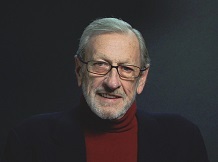
In working for Kahn, Jack learned some lessons, both positive and negative. The first lesson was the importance of collaboration with others in the office and with engineers. The second concerned recognition and that no one was mentioned as having participated in the project. The third concerned rewards as there were no benefits, no paid vacation, and no retirement money. So when he had the opportunity to manage a firm, Jack worked towards collaboration, including collaborating with the client and approval agencies; recognition occurred whenever a project was published as all the team's names were included; and he made sure to have benefits, retirement options and a better than average pay scale for employees.
The Changing Practice

Young people today talk about a greater collaboration with each other than the generation that preceded them. Less talk and more action--as in getting it done. Also more interest in technological solutions, plus a social consciousness that hasn't been as present in the last 20 years. Also a greater emphasis on diversity, including multiple points of view in how things are accomplished. Robert believes that these trends will result in a different kind of architecture.
Atelier and Collaboration

Over the last ten years, Ehrlich has developed an atelier practice with four partners who work well together. He thinks that 10 years ago he needed to do projects on his own, but now he is excited and challenged through collaboration--he enjoys the spirit of community.
Teach Flexibility

Architects work with people on the design team and also work for multiple and multi-headed clients. Matthew believes this kind of diversity requires a more flexible education, and that students should step out of the design schools.
A Silo Mentality in Education

Brett would like architects to be better educated. When he visits architectural schools, he sees a separation of disciplines when a collaboration is required, and is the direction the profession is aiming towards. While education is a place of exploration, he sees the importance of students working with real world problems and gaining important skills, including knowing basic software programs; otherwise, he sees difficulties in bringing architecture students up to speed in the workplace.
Outside of the Design Studio

When Scarpa went to school, there was the perception that the person who was successful in the design studio was the person who would be successful as an architect. As the profession of architecture has evolved in the past twenty years, its complexity requires many areas of expertise. Scarpa advocates pursuing one's interests within architecture., from construction technology to real estate. Architecture needs a paradigm shift to allow people who aren't great designers to pursue other areas in the field.
Get Students Out of the Studio and Talking to People

Adrianne talks about getting students engaged with community and business leaders to understand architecture from the owner's point of view, learn about community process and presentation, and economic revitalization. Her education included opportunities to focus on economic development, street revitalization, and nightlife improvement, giving her insights into community functions.
The Architect is a Facilitator
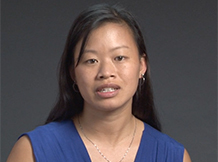
Evelyn has an undergraduate degree in architecture and a graduate degree in business. She talks about the unique role of the architect as facilitator and the importance of being collaborative. She advocates for placing architects in more interdisciplinary classes to improve their facilitation skills. In addition, she sees architects as having many entrepreneurial abilities, but needing more training to put those abilities into practice .
Teach Code Knowledge

Hafsa discusses why she believes students would gain a professional maturity if they had a basic knowledge of code implementation and an understanding of jurisdictional and zoning requirements before they graduated.
Radical Creativity and Speed

You can coax design talent out of most educated people, but there are two sparks you cannot teach. One is the radical creativity of thinking outside the box and the second is speed. It's a joy for Barney to have a student with these talents.
Teacher and Student

For over 20 years, Scarpa has been teaching. He loves it and sees it as mutually beneficial--the teacher giving and also taking back, as he learns a lot. He feels part of teaching is empowering students to discover and find themselves, rather than discovering who he is as a teacher. Not only does Scarpa love teaching, he's been addicted to it for a very long time.
If We Educate the Public, They Will Demand Good Design

Alice explains that by educating the pubic about good design, people will demand the best environments. She brings up the analogy of knowing which foods are best for our bodies and then avoiding eating at McDonald's. When there is a high demand for good design, we as architects can then do our jobs best.
Be a Whole Professional

Alison would like to go back to apprenticeships, where students learn to draw and build their projects. While she sees continued segmentation within the fields of architecture, she very much believes that to design a building requires an holistic approach, combining creativity, time management, and strong technical knowledge.
Listen to Your Passions

Rachel describes her disaster training and subsequently, when Hurricane Katrina hit, her decision to send an email and offer assistance in the Gulf Coast. From that moment of inspiration, fifty people were eventually involved in damage assessment in Mississippi and she believes it's very important to listen to that small voice of passion within.
The Best Advice about Time

Adrianne's advice to young professionals is to not put off a goal you have set for yourself. She suggests that whatever your longed-for next step-- to take on a big project, get licensed, have children--that you won't have any more time later than you do right now, so it's important to move forward.
Communication is Key

While Matthew could give a lot of advice, he's learned that in many situations the best approach is to ask questions and keep in communication. This approach is particularly helpful in that architectural education is not static, but ongoing. The learning is not just about design; yet what you learn may influence your work and, therefore, affect the people who use it.
Leave Your Ego at the Door and Focus

Goal oriented, Hafsa suggests understanding where you want to be in five or ten years, and keeping focused on achieving those desired results. As a team player, you can learn from many people if you are willing to put your ego aside and not always ask "what's in it for me?"" "
Yes, We Can Change the World

Evelyn is convinced that architects are able to effect change in the world, and suggests holding on to that feeling of being able to accomplish the impossible in those difficult times when you are struggling.
Show a Willingness to Participate

When Evelyn was seeking a mentor, she reached out to her local AIA. They in turn told her about a position on the State Board that had opened up and she was asked if she'd like to be the Associate Director for the regional board. She feels that if you show you are interested in participating, people will steer you in the right direction.
Find a Mentor

Gretchen would like to see emerging architects locate a mentor or someone to shadow. To find out who is willing to be a mentor, she recommends the AIA as a good local resource.
Things They Never Told You in School

No one ever mentioned to Ronald the many difficulties in realizing projects, and the loss of time, money and emotional let-down that can result. He tells us what they never told him, and that includes woeful tales of extorted clients, political upheaval, building moratoriums and jail time.
Expectations and Anxieties of Being a 21st Century Architect
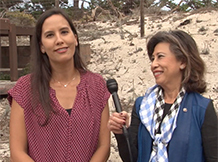
Elizabeth talks about becoming a global leader, expanding services and markets. Elissa Richter, thinking back about growing up in an architectural family, talks about making that transition from being in a comfortable role at work to one of leading the firm.
A Vocation, Not a Profession
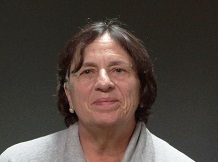
On the one hand, Barney notes that a lot of architects discourage others from entering the profession saying it's not a way to riches. On the other hand, she doesn't want to paint too rosy a picture as the profession is impacted by economic recessions. She sees it as a vocation where you can meet your needs.
Eventually One Becomes a Master

Gwynne is skeptical about being able to teach design talent. To be able to design comes more easily to some than others. As much as anything, one becomes a master by doing it for many years. He believes it's the integration on a subconscious level, which comes after many years and not being fearful of moving forward.
Dare to Experiment

Architects must first understand the people for whom they are working for, and then believe that they have to invent the world for tomorrow. Be in permanent research and to dare to experiment and believe, says Odile, and it's your duty to build the future for tomorrow. To be an architect, you need to be patient and believe that at the end you will succeed.
Gift of Youth

The gift of youth is energy and freedom, and Steven's advice is to go out and have multiple experiences. By working on a house or traveling to Kuala Lumpur, much is learned . Think out of the box, and do something that would be difficult to do when you are older by ten years.
Professional Karma

Robert believes that everything you do matters, even if it doesn't feel like it. All of the experiences that you can participate in will make you a different person than you are today. He sees the small actions, the voluntary actions that you do in the community, is like professional karma that help define your character and determine who you will become. He advises to be an active part of your community--it is rewarding.
Foremost, Be a Good Listener

Gary explains that being a good listener increases your creativity as it allows you to hear the problem; and people are more likely to listen to your ideas if they feel you've been listening closely to what they want. Take the opportunity to tap into the larger community by listening to your peers and see what they are seeing. Often someone has dealt with a similar problem to yours.
The Most Valuable Experience

In Jordan's experience, construction administration has provided great benefits to his professional growth. He believes that to see drawings translated into three-dimensional space teaches you an understanding of what every line means, let's you communicate with the contractor and comprehend shop drawings. That kind of experience is unforgettable and will inform your designs.
Soak in Inspirational Architecture

Third generation architect Erik Holliday explains his passion for architecture. His father, Michael, recommends being around designers and attending design events to get inspired and realize the amazing process of building-- that architects can make a difference.
Step Back and Get the Big Picture

Jason discuses his methods of keeping engaged and inspired by looking beyond the immediate project and seeing the big picture: talking with other people, volunteering in the community, going to lectures with a group, understanding what the philosophy of the firm is and not bogging down with only close-up views of your work.
At the Heart of How Architecture is Changing

While the profession thinks of equity as an advocacy issue, Saskia points out that it is a business and financial issue. Research across industries show that firms with gender equity had tangible financial gains. She points out that teams that have diverse members are more successful at bringing in work.
I Think I've Seen One
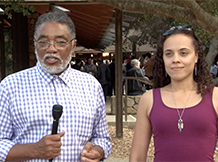
There are only about 1900 black architects in the country, explains Michael, and just by walking into a classroom, he is demonstrating that becoming a black architect is a possibility. His daughter, Sophia, points out that there are about 300 black women architects; she has started a program where she is the sole black woman.
Moving Towards Solutions

Equity by Design has been investigating the challenges and pinch points that workers go through from graduation to retirement. Rosa discusses how an issue that began with the spotlight on women is now understood as an endemic issue throughout the profession.
What does Equity Look like in Education?
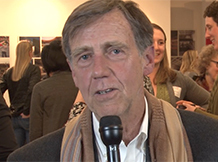
Harrison asks, "What does equity look like?"" He discusses first steps to increase diversity and also discusses focusing more on ""the kind of issues that exist in society"" within design studios."
Breaking Existing Silos

Deanna uses the design process to get people and communities involved in an alternative justice practice. Her overseas travels further opened her eyes to issues of equity and rights.
300 Men and 12 Women

Carol is a child of the '60s, who attended an all-girl's Catholic High School. When she was a senior, she decided to be an architect, to give her a noble purpose. No one told her anything against it, and she was surprised that in her class of 300 men, there were only 12 women. There was a high attrition rate. There was an understanding that, if you wanted to be an architect, you couldn't really go around and do something else.
Inclusion Creates a Different Dynamic
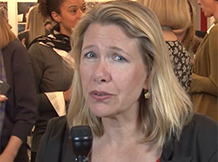
Julia examines a different model of running an architecture firm and sees their openness to include a variety of perspectives , not catering to one ego, as a foundation of their continued success.
Equity is About Everybody

The Missing 32% conference opened up Saskia's eyes to the issue of equity, which she equates to the issue of relevance. As architects we will remain relevant when we can best represent our clients and the people we would like to impact. When we don't represent a diversity of voices and experiences, then we will struggle.
Gender, Architecture and the Making of Places

Under affirmative action in the 1970s, Wendy was hired just out of school by the Navy. She was the first young women among the 254 employees. Overwhelmed by the differences in how men and women were treated there, she became a founder of the Organization of Women Architects.
This is Their Problem

It wasn't easy for Odile when she was starting out in architecture, and it still isn't easy. In France, where only 29% of women are architects. Odile believes this is because women aren't self-confident enough, and are trying to find a solution by negotiation, rather than trying to prove they are right. Women can talk on an even level with men, but they soon discover that men are not comfortable talking with them. This is their problem.
Speaking Out

Tova shines a light on international workers at firms who may fear mentioning the topic of women and equity because their visas may not be renewed.
The Architect as Mediator

Jason finds that important ideas in architecture can come from people who are different, whether in their background, culture or gender. A diversity of backgrounds and voices creates a more vibrant atmosphere in the creation of ideas.
Are You Still Talking About This?

When equity is talked about in a business environment, Hafsa is surprised as she runs a business that is one of many headed by successful businesswomen. She is puzzled that equity issues should still exist in this day and age.
Equity Strengthens The Entire Field of Architecture

Tibby, working for the AIA, has been impressed with their work in equity and diversity in architecture. She paraphrases the AIA executive director in saying that supporting and improving the skills of all architects is supporting and strengthening the field of architecture as a whole, and that the notions of equity and privilege aren't women's issues but issues for all of us.
Gender and a Widening Scope

Matthew has seen Equity by Design broaden its scope, which he feels encourages younger people in the profession.
We're Missing Something if we Focus Only on the Missing 32%

Adrianne notices that the issues are not just about women, but making sure that people are interested and passionate about what they are doing.
Implicit Forms of Bias

Saskia believes that some barriers to equity can be easy to change and is encouraged that architectural firms are bringing in outside advice about increasing diversity in their practice.
On Being Mentored

So many things at a firm can go unspoken, or happen behind closed doors. Ashley has gained career and firm insights through her connection to a mentor and she hopes to help those who will be coming in after her.
Reflecting Reality

A long time chairperson for the AIA SF Communications Committee and a marketer, Lisa explains that it is a liability is to do business as usual. Instead, it's important to increase a plurality of perspectives within the profession, which she sees as one of our greatest assets.
Aiming to be One of the 18%

Susan is waking up to what needs to change in architecture, particularly for women: only 18% of registered architects are women, much less than the percentage of women doctors and lawyers. She realizes that there is much to be done.
A Woman Rebel

If they were left to their own, old women would be rebels, explains Carol, paraphrasing Gloria Steinem. She started her firm when she was older, and it caused her to have a culture that was not very corporate. The hours are flexible, though they cannot wear pajamas to work. She attracts the ones that don't fit into more corporate environments, and she gets the cream of the crop. About a quarter of the staff are minorities, which Carol feels gives her an advantage in the marketplace.
Feeling Left Out

The AIA recently released a diversity survey. Anesu is hopeful, for herself and other young minority women, that that the organization is starting to address the subject.
A Return on Investment

To hold on to the investment of design education that has been made, it is necessary to keep the profession enjoyable and lucrative for those putting in the long hard hours.
The Post-Sustainable World

When you've grown up hearing that the way to save the world is to be more sustainable, what happens when doing so starts to become the industry norm? Do you start envisioning what a Post-Green World would be?
Big World Issues--Architects Narrowed Perspective

Wonderfully passionate architects, breath-taking amazing designs--and yet, Derek is bothered about the relevancy and influence of the profession in relationship to the significant problems of the world.
The Burden is on Us

Heightening the value and relevance of architecture to the public is a chief goal for Robert. This can be accomplished, not by teaching and telling, but by engagement. If the public can be engaged, Robert believes they will demand better, healthier and more productive designs that can change the world.
Multi-Cultural Modernism

As a modernist at heart, Ehrlich, with a bit of help, came up with the term "multi-cultural modernist" to describe his brand of modernism which has a strong overlay of other diverse cultures. His work, of international scope, balances the local and global communities.
Repositioning and Communicating Our Value

Organizational repositioning of the AIA is a challenge, one that includes looking at how the components operate, how the chapter operates and how they communicate with each other, plus the services they provide. Paul works on the operational issues such as infrastructure, how to communicate better and how serve members. He thinks the biggest challenge is communicating the value of architecture in our everyday lives.
Ideas Belong to Everyone
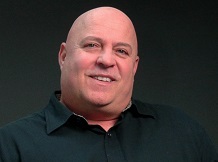
Larry feels gratification when people tell him about good experiences around one of the firm's buildings. Larry paraphrases Charles Eames that ideas belong to everyone, and adds that ideas have to be treated with the utmost care or they can get ruined for everyone. Hearing about these ideas that have turned out well motivates Larry and keeps him going.
Creating Real and Permanent Good

Michael gets the most satisfaction out of projects that improve the entire city, including subways, airports, and water infrastructure.
Helping Others

Hearing back from individuals about advice given, whether about their position in the firm, attending grad school or not, or solving a creative design problem, gives Evelyn satisfaction and she is gratified when she can be of help.
Wholehearted Teamwork

Jason gets the most gratification from the energy and passion of a team putting their whole hearts into an effort together.
The Fun Part

Gary has the opportunity to work with clients who have many different perspectives and whose design goals differ and finding a workable balance in the midst of multiple expectations is his great delight.
Working Collaboratively for Success

Rachel has found the most joy and success when she is part of a collaborative team wholeheartedly tackling an issue.
Aiming for the "Wow!"

It's not just a business for James, and he is gratified by the smile on his client's face when they see the result of his design and say "wow."
Large-Scale Sustainable Features

Martin has been working to save water resources on a large mixed use project that includes office, hotel, retail, and public spaces by including a large water recovery system.
Leading the Way to a Carbon-Neutral Future

Although architects are still divided on the role they should play in creating deeply sustainable projects, Bill states the importance of moving design toward a post-carbon world.
Net Zero Energy Buildings and a Culture of Low Energy
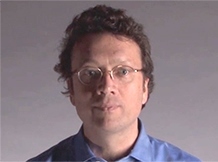
Designing net-zero buildings has to start by looking at each element of a building's energy consumption through an integrated strategy, working together with clients and consultants. Ken outlines such a strategy, used on the first net-zero classroom building.
Resiliency is More About Humans, Less about Buildings
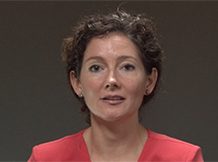
Rachel discusses disaster risk--hurricane and flood resistance, sea level rise and climate change--and wonders if there really is such a thing as "resilience"" in buildings. "
Pioneering Practice

From his first days at EHDD, almost 50 years ago, high-performance was an important goal. The firm was the first to use foil-based insulation in Bay Area homes and on Chuck's first job, Wurster Hall at UC Berkeley, concrete sun shades were placed over the windows. Sun control has always been a dominant theme in their projects.
Jewish Common Sense

Sustainability is not a design concept but a matter of ethics--we should all be doing it. Larry has not heard anyone touting his building as being great because it's handicap accessible, as it's assumed to be a part of the design. The same with sustainability, which he hopes will be just a natural inclusion in the design and building process.
Spaces that Connect To Each and Every One of Us

Having cerebral palsy gives Alexander a different perspective about the ways design can serve all people, including those with disabilities.
Multi-Sensory Spaces

Diane makes the case for "multi-sensory"" spaces in helping to engage people. While one sense
Thinking About an Architect's Long-Term Impact

Doing her thesis in Florida, Rachel viewed a hospital along the coast whose retrofitting took into consideration the potential for flooding so that it would continue to serve the community when most needed. This influenced her thinking about the longer-term impact and disaster risks of project designs and that architects could add substantial value when aware of possible disaster risks.
It Takes a Village
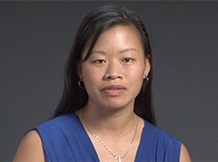
Lee wonders who influenced her most, and feels that many people have helped her along the path. She has experienced a very supportive profession and sees the advantages, for those starting, of being willing to reach out.
From Story Telling to Environmental Solutions

Hafsa was inspired by architects using theoretical narrative in their work, adding more than formal interactions with the surroundings. Her focus has shifted to addressing real world problems of environmental and social equity.
Meeting More People Increases the Scope of Opportunities

Early in her career, Adrianne's main influences were people she met through the AIA; by meeting professionals from across the country she was made aware of the many opportunities available to her.
Understanding How I "Did"" Architecture"

Matthew was influenced by his school instructor who helped him realize his particular way of looking at the world and what enabled him to design. Since then, every person he has had a chance to work with has, in some way, educated him.
Sharing the Same Ideas

Working for Joe Esherick at EHDD had a tremendous influence on George. Working with, and depending on, Peter (Dodge) and Chuck (Davis) was something George just took for granted. When Joe decided to restructure the firm and put the three of them at the center, that was a natural extension of how they had been working all along. Looking back, he appreciated the collaboration of working with others.
Good Work, Life Balance and Giving Back

Right out of college, Jason's first architectural job influenced him. His bosses had an excitement about architecture and insights about a balance between work, life, and giving to the community-- insights that have stuck with him to this day.
Seeing an African-American Women Architect Lecture

Anesu recalls being influenced by the first African-American female architect she had ever seen, Audrey O'Hagen.
Someone Else isn't Going to Create a Leader in You.

The key to leadership is listening and paying attention to those around you and then making decisions with clarity. Leaders do have to listen to multiple points of view and, through their own lens, create a direction. Adrianne believes leadership can be taught and that the best leaders pay attention to developing their leadership skills.
Be Patient

If you are listening and paying attention to the people and situations around you, you can make decisions with clarity. But it's important to have a point of view; leaders listen to multiple points of view and then create a direction for others.
Don't Squash Personalities

For a leadership role, a clear vision is required with a focus on the outcome. Hafsa takes a collaborative approach, guiding rather than managing, encouraging others and clearly sharing her vision.
Really Making that Difference

Looking forward to the next 10 years, Adrianne sees her greatest achievement as having satisfaction with the buildings she is creating. She is reminded by the work that she does in the community when she walks down the street and can point to projects her firm has successfully completed. To know that her work continues to be a positive influence in the community and that she led the effort would be an important legacy to her.
Propel to the Next Level

Duffy loves architecture. Getting his license will propel him to take more firm responsibility and garner more respect with clients: it will enable him do more with what he loves to do.
Not an Acceptable Journey

Having a license not only facilitates one's career, it's a great credential when looking for work. Unfortunately, licensing is viewed as journey itself, and it takes too long to get licensed today.
Proof of Value

Licensure is a learning experience and a measure of one's capabilities. It's important for design professionals to have the necessary credentials to allow their voices to be heard.
While Not the Answer for Many, It's A Way to be Heard

Licensure isn't the answer for many professionals who are happy with the work-life balance they have at the firm. But Evelyn has found that, as far as being listened to and taken seriously, licensure is important to other architects.
The Only Way for Me To Go

Architecture schools teach students to become design thinkers, but not necessarily architects. Adrianne applied to architecture schools to become an architect. It was the only way for her, but may not be for everyone.
Different Values, Different Goals

Jason couldn't imagine going through years of architecture school without finishing that last step of becoming licensed. But everyone has different values and goals and may not have the momentum of achieving that next step towards leadership, so easy on the pressure.
A Natural Progression

It's a natural progression in your career, and like any professional, you need to be licensed and take responsibility for your work.
The Next Generation of Leaders

The partners had been together as EHDD for 25 years when they started thinking of ownership transition, and discussed it for years. At first, they selected four people in the office with the most potential. It wasn't always smooth, but Peter is very gratified at the next generation's success.
Autonomy vs. Contribution Within Other Firms
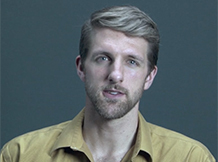
Matthew has gone back and forth about owning his own firm. He is attracted to the sense of autonomy and freedom of design, but would like that sense of collaboration that a partnership would provide.
Merging Firms Together--Challenges and Benefits

Helena gives tips gained through the process of merging her 17 year-old firm and staff of 25 with another architectural firm and becoming one of the managing principals.
Put Your Money Behind What You Do

Adrianne never thought of herself as an entrepreneur, but as continuing a legacy, and talks about the job she started the day she passed her licensing exam.
Time to Reimagine the Firm

Rachel has an entrepreneur spirit, and has considered owning her own firm. She believes that the time is ripe to reenvision a new model for firm management.
Asking What is the Next Step?

Jason has worked for a large firm for a number of years, and is weighting the pros and cons of going out on his own. He's trying to figure out the next steps and see what opportunities are ahead.
Distinct Characteristics of Higher Performing Firms

There are distinct characteristics of higher performing firms. Successful firms understand market trends, and make adjustments before the economy forces them to do so, they understand risk and try to mitigate it, and they clearly communicate strategies. The result of effective management is improved performance.
What's Important to Us

The big moment is once the building is built and the families move in -- seeing what works and what doesn't work. Learning from residents over time informs the firm's design work.
We Must Be the Voice of Those Buildings for the Community

Architecture is not solely about new buildings but also about caring for the past. When a building comes up for review, an architect's duty is not only to his client but to the entire community.
Sustainably Restoring Modernist Icons

Ron shares insights gained through his impressive renovation of the modern, iconic Kaufmann House (1946), including uncovering existing conditions, determining which items will be restored or replaced, and supporting better building performance.
Timeless

Helmut believes that the real value of design is revealed only with time. Then one can say that the building not only works, but it's timeless--it improves with time. He recalls some post-modern buildings that were celebrated when first built, but over time, they disappoint and appear rather tired.
An Expanded Role in Society

Society faces many challenges, and design thinking isn't limited just to the building and site, thinks Paul. He would like the public to see and appreciate design in a broader frame; it wouldn't hurt if architects did too.
How to Demonstrate the Value of Your Design

Tim sees no distinction between design architect and executive architect, feeling these distinctions do a disservice. He points out that design synthesizes construction, function, and appearance, and is the architect's unique gift.
Use Their Words

Is there a difference between American and European beliefs about working with an architect? Odile is not convinced. She believes that the general public thinks that working with an architect is too expensive. But she points out how untrue this is, as architects help you do more for less and that people could be easily educated on this. But because architects tend to speak in their own language of design, which most people don't comprehend, she recommends bringing people to architecture by entering their world and using their words to help them understand.
Almost Like a Psychiatrist

Architects act almost like a psychiatrist, carefully listening to the inner needs and wants of their clients. In the synthesis phase of design, architects then tell their clients what they need. But this transition isn't easy--clients continue to tell rather than listening to the architect, and may miss out on the professional experience they have hired.
Walking Through Buildings is Like Walking Through Living Art

Tibby's perspective is that architecture is art integrated into functionality. To her, walking through buildings is like walking through living art. She marvels about what a gift great architect is!
Translating Ideas into Reality

Leigh encourages architects not to be bound by boundaries of education, business or contracts. She explores a broader view of architecture that includes interiors, urban design, and even advocacy.
Much Much More

Going far beyond just the building, the value of design includes the health and welfare of communities and the livability of cities.
The Power of BIM

Mehrdad explains integrated project delivery (IPD) and its ability to facilitate and enhance communication at earlier stages of the project, especially with tradespeople.
Making Issues Real

Architects can imagine that which doesn't exist. They take an idea and create a space and a place around it. When it comes to risk, architects are aware of them but don't convey the urgency of preparing for them.
Virtual Reality

"I'm in love with 3D programming!" proclaims Carol, who knows what it's like to wait for the renderer to show her what her building design looked like in perspective. She can't imagine doing architecture without it.
The CPU was the Size of an SUV

Forward-thinking Jack wanted to have the latest in computer technology when he opened Anshen + Allen's office in Los Angeles. At that time, the huge CPU--costing $500,000--had to be located in a separate air-conditioned room, with an air-lock. (The price and size of computers went down considerably.) In addition to the latest technology, the office was an integrative practice where architects and engineers worked together and had all-day charrettes. Business boomed. The combination of technology and integrative practice--Jack could hold up a disk and say to the potential client that all the drawings would be on it--brought many large commissions.
Executing BIM

John discusses lessons learned from BIM projects: the critical importance of BIM champions, encouraging and supporting owner involvement, facilitation of buy-in by participants and having the plan as a living document. He also mentions the resources and time needed to develop a plan before starting modeling.
My Biggest Downfall

Evelyn feels that she doesn't handle the balance between her professional life and personal life as well as she would like, and notes that work can become play.
Does Balance Exist?

Rachel doesn't believe that balance exists between professional and personal life. As long as what you're doing and who you are being is enjoyable, then it really doesn't matter to her what you call it.
We Never Encouraged Them to Be Architects

Even though they knew what they were getting into professionally, the Dougherty children chose to follow their parents. As a family of architects, they reflect on both the opportunities and challenges of working together.
Balance Requites a Lot of Work

The #1 question that Jason asks his mentors is about how they maintain work-life balance--he finds it requires work. This year he's making an effort to say, "I can't."
Flexibility + Communication
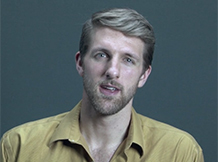
The best way Matthew has found to achieve work-life balance is to be flexible and communicate that to the people he works with, letting them know about his other commitments.
Organization is the Best Skill

Hafsa achieves work-life balance through being well-organized, calendar in hand. Communication is also very important. Otherwise, she knows many hours can be wasted.
Flexibility + Network of Support

Amy, an owner of a small firm, finds work-life balance tricky, and that flexibility and building up networks of family and friends is a key for her and her family's happiness.









